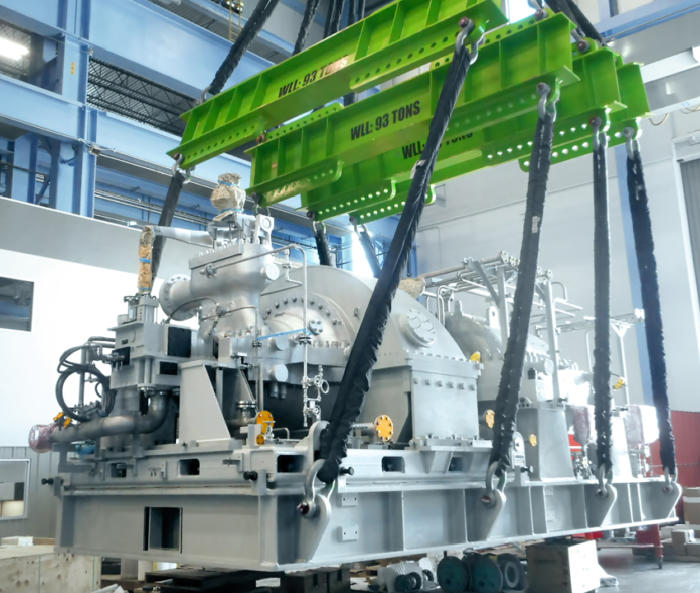FOOTPRINT REPLACEMENT

IMPROVE PERFORMANCE WITH FOOTPRINT REPLACEMENT
Footprint replacement is the process of replacing existing compressors and steam turbines with higher efficiency, higher performance machines designed to match the existing footprint with minimal modifications to process piping and foundations. MCO-I has extensive experience supplying footprint replacement projects for a variety of applications. Backed by Mitsubishi Heavy Industries Compressor Corporation (MCO) engineering, we custom design replacement casings with castings and forgings produced in our own MHI foundries.

BENEFITS OF FOOTPRINT REPLACEMENT
- High performance efficiencies of new compressors and steam turbines allow for significant increases in capacity with reduced energy consumption
- Larger expansions can be implemented at a lower cost per ton of incremental product when compared to projects that re-rotor existing machines
- Installation is designed to increase operating margins and allow for additional plant debottlenecking
Delivers higher capacity upgrades of over 100% versus the 10-20% increases achieved by re-rotoring - Compressor and steam turbine performance is verified by shop testing before shipping

EXPANSION OPTIONS FOR COMPRESSION FACILITIES
To upgrade existing capacity, we have to consider several options. The expected Return on Investment (ROI) determines the best option.
| Step 1 | Adjustment of Process Conditions |
|---|---|
| Step 2 | Rerotoring of Existing Compressor |
| Step 3 | Replacement of Existing Compressor |
| Step 4 | Addition of New Compressor |
- Step 1. To increase production, you can change suction pressure to handle more flow without changing compressor internals. Or sometimes increase speed. Production in this scenario will be generally be raised less than 10%.
- Step 2. You can change out the compressor internals of the existing casings. Some or all of the impellers & diaphragms are replaced with new ones. Normally, the compressor shaft is also replaced to cope with increased power. This option can be expected to raise production between 10% to 20%.
- Step 3. Replace existing compressor with new compressor. You can significantly increase production by removing the old compressors and installing new high efficiency units on the existing footprints. This will result in production increases on the order of 40-70%. We would like to focus on compressor replacement, because it is quite essential and useful for significant upgrading ratio.
- Step 4. By keeping existing compressor as it is, simply add new compressor train. MHI has experience for all of these options. Here, we will focus on Step 3 to show that using modern compressor technology can offer the potential for impressive operating cost.
